
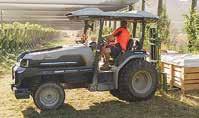
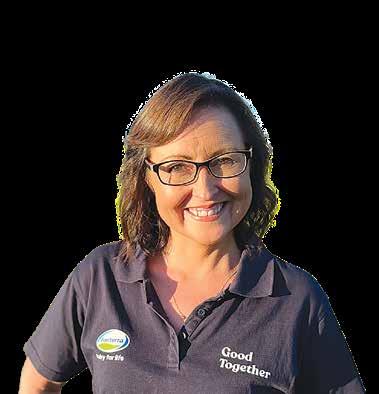




FEDERATED FARMERS is joining major industry-good bodies in not advocating for the Government to withdraw from the Paris Agreement.
A remit submitted by “a group of provinces” for NZ to withdraw from the climate change pact at the Feds’ annual meeting in Christchurch last month was voted down.
Feds president Wayne Langford believes there’s no point in debating whether to stay in or leave the Paris Agreement.
“We could spend a whole heap of time, energy and money fighting against the Paris Agreement, but I just don’t see that as a good use of our resources. It’s not going to happen,” Langford told Rural News.
“The Government have been very clear about that, so have our trade negotiators, and our largest exporters. It would be total economic sabotage and farmers would pay the price.
“I’ve sat in rooms with dairy company leaders who have said it could shave as much as $3 off the dairy price – so why would we even be talking about it?”
Groundswell leader Bryce Mckenzie isn’t surprised. He says Federated Farmers normally take a more conservative line than what they do.
“They also must work with Government on policy so may be working strategically.
“They do have to be careful though as many of their subscription paying members are being adversely affected

by what is in the Paris Agreement,”
Mckenzie told Rural News
Langford says that his organisation is focusing on domestic policy settings, “which is where the rubber really hits the road for Kiwi farmers – domestic methane targets, emissions pricing, and that sort of thing”.
“That’s where the real cost sits, and the danger for our rural communities, so we’re pushing back strongly on those domestic methane targets to
make sure they’re much lower.
“We’re also 100% opposed to any price on agricultural emissions – end of story. We’re just not having a bar of it.” He confirmed that at Federated Farmers’ annual meeting, there were a range of views on the issue, but at the end of the day, the remits from various provinces didn’t pass.
Langford says this shows the real strength of Federated Farmers.
“People can bring a policy position
forward from their provinces for discussion, there is a robust debate, and we move forward united together.
“We’ve got some really solid people sitting around our national council table. Some are old and wise, others are young and enthusiastic, but all of them are passionate about farming.”
Industry-good organisations DairyNZ and Beef+Lamb NZ are warning of major risks of walking away from the Paris Agreement.
“There are real trade risks if New Zealand withdraws from Paris - it would not just be symbolic,” says B+LNZ chair Kate Acland.
“Walking away from the Paris Agreement would also put at risk our credibility as a high-value, responsible producer and trading partner.
“We would join a small group of countries outside the agreementLibya, Yemen, Iran, Eritrea, and South Sudan,” she says.



The EU10i’s fantastic portability, quietness and high-quality power makes it ideal fora wide range of home, recreational and professional uses. With a maximum output of 1000W, the EU10i is quiet and lightweight at only 13kg.
EU10i GENERATOR $1,899
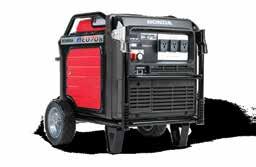
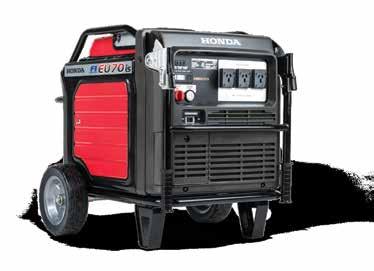

One of the worlds best selling generators, the portable EU22i is perfect for a whole range of tasks to help you get the job done. Used for leisure, back-up power and on the job site, it packs a punch with its GXR120 engine that is quiet and delivers 2200W maximum output.
EU22i GENERATOR $2,799
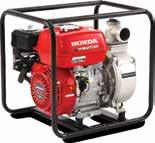


Perfect for the motorhome, worksite, or just the occasional emergency use. The Honda EU32i is a class leader with a newly developed engine designed for high performance and excellent cooling, it delivers up to a maximum of 3200W.
EU32i GENERATOR $5,099

Honda’s EU70iS has a maximum output of 7000W. It is the perfect back up power solution for the home or worksite. With an advanced electronic fuel injection system and large fuel tank it has an exceptionally long run time. It features Honda’s sine-wave inverter technology for smooth, high quality power flow. WB20 WATER PUMP $1,099 The Honda GX120 engine that powers the WB20 ensures easy starting, easy usage, outstanding fuel economy, low emissions and long-lasting durability. This 2” water pump has the capacity to deliver up to 600 litres per minute. WT20 TRASH PUMP $2,099
EU70iS GENERATOR $8,199
The WT20 is an environmentally-friendly trash pump with low emissions, less noise than many competitor pumps and low fuel consumption. Able to pump water with solids up to 24mm, it’s also easy to open the pump housing if a blockage occurs. It’s ideal for construction sites or on the farm.
NEWS 1-10
AGRIBUSINESS 11 HOUND, EDNA 12
CONTACTS 12
OPINION 12-14
ANIMAL HEALTH 15
MACHINERY AND PRODUCTS 16-19
RURAL TRADER 19
PETER BURKE peterb@ruralnews.co.nz
SOME FARMERS in the Nelson region are facing up to five years of hard work to repair their damaged properties caused by the recent devastating floods.
Federated Farmers Nelson provincial president Kerry Irvine says there is not a farm in the province that hasn’t been affected in some way by the floods. He says one farmer has lost six and half kilometres of fencing, and others have also been hammered.
“There are farmers who have lost tracks, culverts and flood gates and many have paddocks covered in silt,” he told Rural News
HEAD OFFICE
Lower Ground Floor, 29 Northcroft Street, Takapuna, Auckland 0622
Phone: 09-307 0399
Fax: 09-307 0122
POSTAL ADDRESS
PO Box 331100, Takapuna, Auckland 0740
Published by: Rural News Group
Printed by: Inkwise NZ Ltd
CONTACTS
Editorial:
editor@ruralnews.co.nz
Advertising material: davef@ruralnews.co.nz
Rural News online: www.ruralnews.co.nz
Subscriptions: subsrndn@ruralnews.co.nz
Irvine says at the height of the flood, huge trees were being ripped out and are now floating around in Tasman Bay. He says the Motueka river is now


but a shadow of itself with paddocks on the banks ripped away throughout the catchment. Irvine says every primary sector business has been affected, including sheep and beef, dairy and horticulture.
“A number of houses have been yellow or red stickered and it’s likely more will be added to the list as the
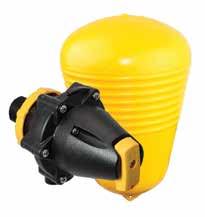
Ideal for Cattle Troughs
Side/Bottom Mount
Detach to Clean
full extent of the damage is revealed,” he says.
Irvine says it’s impossible to estimate the final repair bill because farmers will just go out and buy what they need and this will never be included in the final bill. He says they have had government officials and ministers down to look at the damage and
attend civil defence meetings. But he says while government may have good intentions to help, it is slow to eventuate. “I’ve got farmers who need stuff now,” he says.
Meanwhile Federated Farmers president Wayne Langford, who farms in the region, has seen for himself the nature of the devastation. He says the
destruction in parts of Nelson and Tasman is extensive, with some farms totally unrecognisable. He says you can see where the flooded Motueka River came through and swallowed everything in its path.
“It’s total devastation. One farm I visited had about 50 hectares taken out. The river changed course and just chewed right through it. Orchards nearby got absolutely smoked as well. It is clear some properties have been hit far worse than others – and that those farmers urgently need our support,” he says.
Langford met a farmer who has lost a quarter of his farm and says the scene is heartbreaking. He says some of the worst of the damage is to farms right by the river, which are also some of the most productive.
As Rural News went to press, Kerry Irvine and other farmers were on tenterhooks hoping that there would be no further damage.


Compact/Robust

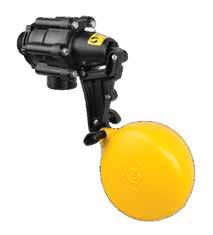


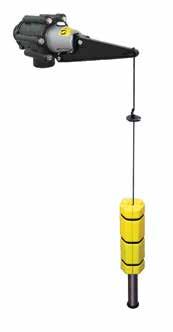
GROUNDSWELL IS
ramping up its ‘Quit Paris’ campaign with signs going up all over the country.
At least 36 signs have been ordered by farmers and landowners with properties along State Highway One in the South Island.
Signs are also going up on State Highways Two and Three in the North Island.
Groundswell leader
Bryce Mckenzie says that while National is getting “irritated” by their campaign, Groundswell is getting a sympathetic hearing from the coalition partners, NZ First and ACT.
He believes the Quit Paris campaign will become one of the major issues at the next general election.
“We are talking to some parties about it and I’m pretty sure they will take a stand closer to the

general election,” he told Rural News ACT agriculture spokesman Mark Cameron says the rural communities need to know where their political leaders stand on the issue.
“As the pressure mounts on politicians to mark where the Paris Accord sits, especially as dissent grows, where will our leaders fall?” Cameron notes that political abstention will
TIGHTER BEEF and lamb production globally have worked to the advantage of NZ, according to the Meat Industry Association (MIA).
MIA chief executive Sirma Karapeeva says this has resulted in a lift in export prices and that the sector performed strongly again during May, with overall exports worth $1.15 billion, a 6% increase year-on-year.
“While the volume of exports for both sheepmeat and beef was down
compared to last May, there was an increase in export value, due to high per kg values. This reflects the red meat sector’s continued shift from volume to value, in line with our ambition to move further up the value chain,” she says.
Karapeeva says the US was the largest market for the month with exports worth $327 million, down 5% but compared to very high exports in May 2024. And she says exports to

hurt both sides of this important debate.
“As both sides need an answer founded in science, economic outcomes, and opportunities - devoid of hyperbole and catastrophic overtures.
“I’d suggest, those with political nous should genuinely consider the ‘leave’ versus stay argument. I would suggest in that moment that both are genuinely costed. This way rural NZ knows
China continued to recover, up 6% to $240 million; the UK rose 44% to $89 million and Canada by 174% to $88 million, including record volumes and value for beef.
This trend is evident in the report from the MIA which shows that overall volumes of sheepmeat exported dropped 11% compared to May 2024. However, the value increased 18% to $451 million. Sheepmeat volumes to China dropped 17% to 12,974 tonnes
exactly where they and the country land,” he told Rural News.
Mckenzie blasted National for its stance of Paris.
At the Primary Industries Summit in Christ-
but the value increased by 9% to $93 million.
There was a similar situation with beef export volumes. These were down 10% to 47,789 tonnes but the value rose by 6% to $531 million, with the average export value increasing to $11.10/kg from $9.43/kg last May.
Karapeeva says Canada was a standout growth market for beef, with exports of 5727 tonnes worth $65 million, an increase of 170% and 235%
church last week, Agriculture Minister Todd McClay said that leaving the Paris Agreement would be madness.
He warned that other countries would use that to block our exports and clear our products from their supermarket shelves.
“There would be consequences, whether you believe in climate change or not, because the world does not owe New Zealand a living,” says McClay.
Mckenzie says he doesn’t know what McClay is basing his statements on.
“They have done no costings: the Government claims our products will be removed from supermarket shelves,” he says.
“I thought the world wants lower emission food and the food we produce has the lowest emissions profile in the world. If they remove our food products, where will the new products come from?”
respectively from last May. She says the red meat sector continues to be a strong driver of economic growth for NZ, particularly considering this very good performance is off a lower base than other sectors, such as dairy.
“We’re hearing from red meat processors that margins remain tight. That means that farmers are receiving the lion’s share of returns, which is great news for rural communities,” she says. – Peter Burke

OVER 85% OF Fonterra farmer suppliers will be eligible for customer funding up to $1500 for solutions designed to drive on-farm efficiency gains and reduce emissions intensity. The funding is part of a wider package of customer incentives announced earlier this year, through separate agreements with Mars and Nestle. Fonterra farmers can apply from next month. They can apply to receive a reimbursement on certain on-farm solutions of up to $1500 for their farm, if they achieve the Co-operative Differ-
ence in 2025/26. Based on 2023-24 data, Fonterra expects this to be over 85% of farmers. Farmers will receive funding for their chosen solution in the month following verification.
The on-farm solutions for animal performance will be provided by herd improvement companies, LIC and CRV. For pasture optimisation funding will be available for subscription to Pasture. io and Aimer and for data optimisation Farm IQ and Trev subscription.
Farmers can also use the funding to boost on-farm planting using a nursery or provider of their choice.
Group director for Fonterra Farm Source,
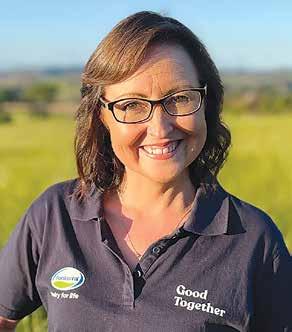
Anne Douglas, says the on-farm solutions put forward have been selected based on farmer feedback.
“When we announced the new incentives in February, we asked farmers what on-farm solutions the customer
funding should cover.
“What we’ve selected is based on that feedback, as well as the fact that they are results-driven, widely available, easy to use and help drive emissions efficiency.”
Included in the funded solutions are a range of animal performance tools from LIC and CRV, as well as pasture and data optimisation tools and on-farm planting to improve carbon sequestration.
“We’re pleased to be working closely with a range of providers this season to deliver on-farm solutions that benefit farmers,” says Douglas.
“These will benefit a large group of farmers by supporting them to fur-
ther improve efficiency gains and emissions intensity reductions, which will in turn help us make progress towards our co-op’s on-farm emissions target.”
To be eligible for the funding for on-farm solutions, farmers need to achieve any level of the Co-operative Difference in 2025/26 and meet the terms and conditions for the initiative.
Mars and Nestle have independently supported Fonterra farmers with their sustainability actions through initiatives introduced over the past couple of seasons.
In 2024, Fonterra farmers were invited to take part in the Mars tools and services pilot,
which provided access to tools and services, including animal efficiency services and digital tools. Additionally, Mars previously supported the greener choices programme, which made it easier for Fonterra farmers to identify and buy products at Farm Source stores that could help them make sustainability improvements on-farm.
In 2023, Fonterra announced that Nestlé would make an additional payment of between 1-2 cents per kgMS for farms that achieved any level of the Co-operative Difference. This payment has been replaced with the new emissions incentive payment from this season.


PROFITABILITY ISSUES
facing arable farmers are the same across the world, says New Zealand’s special agricultural trade envoy Hamish Marr.
The arable industry is facing “the perfect storm” and New Zealand is not alone, Marr told the Foundation for Arable Research’s “Show me the money” conference at Lincoln University recently.
New Zealand is a major player in herbage seed production which is in global oversupply. Growers also rely on a free market price for grain which is linked to the global price.
Marr, a Methven mixed arable farmer, says the problem with arable is the gross margin.
“There is simply not enough money being generated.”
A cost of production
“Whoever brings arable together, needs to bring the data and technology together and to link this with other sectors.”
spreadsheet commissioned by FAR, based on a Canterbury irrigated farm, showed a gross margin of $983 a hectare for feed wheat and $951/ ha for ryegrass seed for the 2025 harvest. For the ryegrass crop, the gross margin essentially represents only the value of the straw, he says.
“This isn’t anyone’s fault as we are dealing with the international price, but the challenge is

how to turn this around.”
Arable exports are worth $340 million, with another $1 billion in arable production underpinning the domestic pastoral sector.
Yield has the biggest positive influence on cost of production and this needs to increase to produce more on less land.

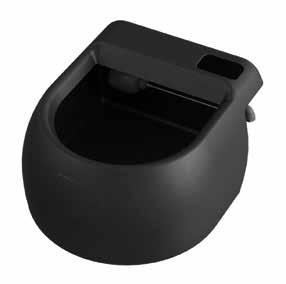
“So instead of growing five crops I will have to grow 10. Diversification is nothing new for arable farmers, but we need to diversify, be agile and look at integrated systems. Some of us will look at horticulture, some dairy and some may even go back to ewes and lambs.”
Marr also questioned who had oversight for the arable sector. This was not FAR, whose mandate is research and development, or Federated Farmers, which advocates for all farmers. A formal agreement needs to be reached on who is responsible for different roles. No one is advocat-
ing for arable in Wellington to government and others, he says.
“Onions NZ have a $200 million export market and have several people in Wellington and they brief me before trade delegations. No one rings me from arable.”
A vacuum in information gathering also exists in the arable sector.
“Whoever brings arable together, needs to bring the data and technology together and to link this with other sectors,” Marr says.
In her last speech as FAR chief executive before stepping down, Alison Stewart said it is widely recognised that arable crop production in New Zealand is more expensive than in many overseas countries because of higher land and labour prices and greater input costs.
Over the years, New Zealand arable growers have been able to stay competitive because of their ability to generate much higher yields, averaging 12 tonne/ha for milling wheat compared to 4t/ha overseas.
“Unfortunately, there comes a time when further yield optimisation is either no longer possible or no longer acceptable under resource use limits. Arable growers are now facing this situation.”
FAR’s conference looked at ways of maximising returns through the application of proven research and technology. This included only applying an economic optimum rate of nitrogen fertiliser while utilising soil nitrogen supply, and options for reducing agrichemical inputs without comprising crop production and profitability.
LABOUR’S AGRICUL-
TURE spokesperson Jo Luxton says while New Zealand needs more housing, sacrificing our best farmland to get there is not the answer.
Luxton claims that National has a new bold proposal for the national direction of infrastructure, development and primary sector.
“They are suggesting the near-total removal of protections for some of our most productive land – Land use Category 3 (LUC 3) – for urban development. It’s been framed to make space for housing and bring prices down, but to be straight about it, it’s a short-term fix with long-term consequences,” she says.
LUC 1 to 3 land, the country’s best agricultural land, represents only 15% of New Zealand’s landmass (approximately 3.8 million hectares), and LUC 3 land makes up around 64% of that.
“Once the land is gone for urban development, it’s gone,” says Luxton.
“And when we rely on farming for our export income, or 82.5% of our goods exports and 10% of our GDP, preservation of our highly productive land is not only important, but vital. It’s this type of farmland that will support our economy and provide jobs for future generations.”
As a safeguard, the Government is suggesting ‘special agricultural areas’ in established growing areas such as Pukekohe
and Horowhenua.
But Luxton says that while it sounds like a practical solution at first read, another look shows that these existing horticultural areas are already under immense environmental pressure due to council water allocation limits and a high nutrient runoff levels.
“And emerging horticulture regions, those like Northland where tropical and subtropical crops are starting to thrive, haven’t been mentioned.
“The reality is that we need a smarter, futurefocused approach to how we categorise land.
She says with the tools at our fingertips, like remote sensing and better spatial planning technology that can help make those decisions, we can balance the demand for housing and protect foodgrowing land for future generations. She says the Government is putting a band-aid over a dated land classification system, that doesn’t even take flood risk into account.
“This isn’t just about land use – it’s about our identity. We are a nation that prides itself on our primary industries. But right now, it’s being put at risk for quick housing gains where developers will be the winners again. It will allow more city sprawl, and it will do it on the very land that we rely on for our income,” she says.
Luxton says unlike the recent fast-track projects, this proposal is open for


consultation.
She’s urging farmers and landowners to write to ndprogramme@mfe.
govt.nz to make a submission on the future of food, regions, and the environment.

Trusted by farmers for effective worm control with NIL MILK withholding periods and improved R.O.I
Studies in NZ dairy cows have shown the potent effects of EPRINEX® on parasites resulted in more daily milk, more milk protein and more milk solids.1,2


IN AN ever-changing world, things never stay completely the same.
Tropical jungles can turn into concrete ones crisscrossed by motorways, or shining cities collapse into ghost towns.
Dr William Ferguson has been involved in the Kumeu region of West Auckland since 1979, when he did his summer medical studentship with local GP Steven Calverley and his wife Jill Calverley.
“This was over my medical student summer holidays to help develop a designated information resource area of the medical centre,” says Ferguson. “This was so people
could just call in, look up their problem and get some information without necessarily seeing the GP.”
Ferguson says back then the medical centre was at the end of a dirt road, before being relocated to the shopping village in 1984, when he joined as a GP. He recalls back then Kumeu was so out of the way, it didn’t even have traffic lights.
He explains that in those early rural days, the local general practice was a fundamental foundation of the health system.
“In those days, when you were on call over the weekend, you would be flat out literally day and night. Hardly a weekend
Shatter pan layers allowing surface water down through the profile
Avoiding ponding & retaining moisture for use in dry periods
• Rugged high tensile blades
• Replacement ripper tine point (pinned on)
• Delta type wings provide increased shatter
• Large diameter skieth leaves clean cut surface
• Skieth cuts surface trash avoiding blade build up
• Optional pipe chutes
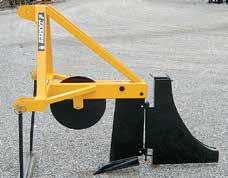
www.james-engineering.co.nz
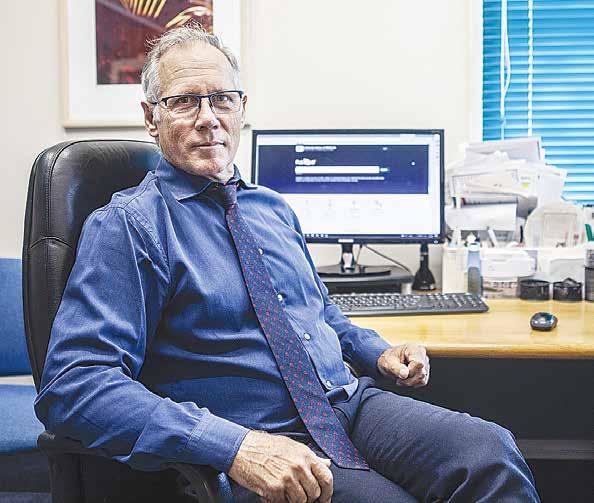
would go by you wouldn’t see someone fall off a horse, crash their bike at Woodhill Forest or do something to themselves with a chainsaw.”
Fast forward 40 years and the character of the town is almost unrecognisable. With Auckland’s expansion, Kumeu went from having a population in the low 1000s in 2013 to almost 7000 today. Formerly a sleepy rural area, Kumeu is now zoned as a future urban area with multiple chain stores.
However, Ferguson


does not seem to view this change as progress. He feels that while the township has gotten larger, the community has shrunken.
“People have lost touch with the good old family GP; they just think you go to hospital or accident and medical centre.
“A lot of on-call has fallen away. I’m not complaining about that because it was never much fun getting up at 3am and having to go down to the medical centre, but that hardly happens now.”
WHEN ASKED if he could see any positives to the recent demographic shift, Dr William Ferguson did not mince words.
“I don’t think there’s been any advantages. The planning hasn’t been in any way commensurate with the speed with which orchards and vineyards have turned into tiny boxes with houses.”
While the Kumeu practice has run into financial trouble despite being flat out with what it does have, Ferguson says the problem is not unique to his practice.
“There’s been no meaningful adjustment to general practice base funding for decades, with costs rising.
“We had to reduce some of our nursing staff and hours to rebalance the books. We’ve had to put fees up, but it’s still a struggle.
He specifically recalls how back in the day there were a lot of wineries in the region, reflected in the gifts GPs used to receive from grateful patients. As many regional industries have relocated out of the region to be replaced with multi-national corporations, those sorts of gifts have dried up.
“When people know they’re part of a rural community, they have those strong links to healthcare and everything else. As it becomes more urban, a lot of that seems
“There are GPs around the country that have literally gone bust. That’s not very attractive for young doctors coming out of their training with student loans, who look at what’s on offer and think they’ll settle for a nice specialty somewhere. I’m very concerned.”
Ferguson expressed his admiration for Kumeu’s remaining farmers and gardeners, while pointing out the necessity of rural healthcare.
“It’s great keeping the food producing aspect of Kumeu alive, particularly in recent times.
“There will always be rural areas that require a GP to have a more than usually wide array of medical expertise to deal with the sort of emergencies that simply won’t happen in Remuera.”
to fall away.”
While this loss of community could be balanced out with increased medical options and stronger health outcomes befitting an urban society, Ferguson thinks that hasn’t happened either.
While Kumeu’s network of practices was small, Ferguson says it was also tightknit, meeting regularly after hours and engaging in ongoing education.
“But the other surrounding practices have been bought up by various corporate entities. They have high staff turnover so we’re often not sure who the doctors are that come and go from some of these practices. People don’t know who their GP is either; they just see whoever they can when they get an appointment.”
DESPITE THE rapid population growth, Dr William Ferguson says infrastructure has not met demand.
“Our books have been closed for years now, we’re at capacity. The receptionist spends quite a bit of their day telling people, ‘I’m sorry, you could try the practice down the road’.
“When an accident and medical opened across the paddock from us, we were happy because for a while, that gave us a place just next door, we could tell patients to go to. But they quickly reached capacity as well.”
Making matters worse is the town planning, with a massive influx of housing but little change to the roads and traffic.
“Even if you left before 6am, it was taking over an hour to get out of Kumeu and into the beginning of the motorway. Just this massive log jam of cars from Riverhead, Whenuapai etc.
“A lot of people buy places thinking ‘this is pretty close to Auckland’ and then when they find themselves having to make the commute they think ‘goodness me, why did we do this?’
“Patients often arrive to their consultation late and stressed because of the traffic getting into Kumeu, and they arrive with higher blood pressure because of worry about getting to their appointment on time.”
Ferguson further explains that nominally having medical services and quick access to the city has, paradoxically, hurt patients more than helped.
“You ring the ambulance and if they know it’s a medical centre, sometimes it doesn’t get priority because they think at least the patient has a doctor on hand there. But we can be waiting hours for an ambulance to turn up.
“On a number of occasions, we’ve realised the safest thing to have done is tell the patient or family member to stick them in the back of a car and go straight to hospital.
“That may be quicker than waiting for an ambulance when there’s a limit to what we can do for you if things go pear shaped, but depending on traffic it could still take up to an hour to reach [Waitakere] hospital.”
THE CHALLENGES of high-performance sport and farming are not as dissimilar as they may first appear.
That’s the view of one of New Zealand’s greatest rugby players and arguably the best centre we’ve ever had, Conrad Smith, who was the guest speaker at a recent DairyNZ and Dairy Trust Taranaki seminar for farmers.
The day long function was held in Hawera –Smith’s birthplace.
He told the 200 people at the seminar that he’s found, since playing rugby, everything you learn to be a successful rugby team in a high performance and high-stress environment can be applicable to all aspect of life – be it

CONRAD SMITH says he likes the idea of diversity in life and, for farmers, this means getting off the farm and into the community, which he believes will be of benefit to them.
“By mixing with other people, you can be diverse in your approach, and spending time off the farm could be a real value. Also, when dealing with issues and problems within a farm, the best thing you can do is to isolate them, not overplay them and be thorough about the things that you can control and fix,” he says.
Smith says when it comes to
leadership, which is a big part of managing a business, it basically comes down to experience. He says when he started out in rugby, he never thought he’d be a leader because of his somewhat introverted personality.
“My idea of leading others was the last thing I thought I would do, but over time this came with experience, because once I had three or four years of doing it, I realised I could offer help,” he says.
Smith says many organisations, including rugby clubs, get caught up
on mission statements and values. He says while this is fine, it isn’t enough. He says unless these are translated into meaningful actions for people, such high-level statements can be somewhat meaningless. Smith says leadership is the same in all walks of life and once you are comfortable in your own skin and know what you are doing well, it’s a natural step to offer that support to others. He adds that it helps you and reinforces the things that are important to you if you are able to talk about with other people.

companies, organisations and other occupations.
He says in all cases, it’s the ability to deal with the challenges and adversity you face.
Smith says that particularly within sport, he learned to successfully bounce back from a bad time.
“It’s always about isolating the problem and not letting it expand. It’s human nature to say when something is wrong and then everything is wrong, and you see that
IN A stellar career, Conrad Smith played for the All Blacks from 2004 until 2015 and during that time they won two rugby world cups.
Nicknamed Snakey because his coaches said he slithered around the field, he made 266 first class appearances and scored 62 tries.
During his career he captained the Hurricanes and at the end of his career played in France. Today he is the Head of Rugby Operations at International Rugby Players and does some refereeing locally in New Plymouth where he lives.
Smith is also a qualified barrister and solicitor.
in sport.
“But if you can isolate it and focus on the things that you have done well to get yourself into your present position and that helps you get through.
“If you isolate the problem and fix it, and from there, focus on continuing to improve on the things you are doing well and you will grow and get better,” he says.
Smith say it’s important not to let stress get the better
of you; in the highperformance rugby environment, that happens every week. He says after a game at the weekend, players get reviewed by coaches and it can be brutal and intense, with the ultimate risk of being dropped for the next game.
He says in most other businesses, people get reviewed every year. He says if people handle the review process well and don’t get two obsessed after losing a game, and what they did wrong, but look at all the good things they did, then the process gives them something to build on.
Before his career hit its high point, Smith completed a law degree at Victoria University and had a lot of interests outside rugby.
He says he didn’t have any burning desire to be an All Black and took success in his stride. He says he’s not against the rugby academies that target young people at an early age and set them on the path to higher honours in the game.
But Smith says he personally gained a lot by having an initial life outside rugby.
He says if young people only have rugby, they miss out on other benefits.

WHILE DONALD Trump
seems to deliver a new tariff every few days, there seems to be an endless stream of leaders heading to the White House to negotiate reciprocal deals.
In the UK, the Labour Government seems intent on destroying its agricultural industry, most recently with the planned removal of the exception of inheritance taxes for farmers and a punitive review of Benefit in Kind rules that will reclassify double cab utes as cars.
The latest announcement is a deal negotiated by Prime Minister Keir Starmer, that sees the previous 19% import tariffs on US ethanol entering the UK falling to zero, with a 1.4 billion litre
quota ceiling, which currently represents the size of the UK’s entire ethanol market.
Ethanol is produced from corn (maize) in the US, with government subsidies to farmers, that has resulted in an estimated 35% of total corn production destined for ethanol production. The total output is estimated at 15.6 million gallons, resulting in an economic boost of US$57 billion to rural communities and accounts for 28% of US farming’s GDP. Its production is also said to create 420,000 jobs in 200 production plants in 23 states.
The tariff removal for UK-bound ethanol is likely to create damaging impacts for UK farmers, who collectively send around two million tonnes of lower-value feed wheats each year to two key production

plants in the north-east of England.
If the Vivergo bio ethanol plant in Hull and Ensus’ site in Teesside were shut down, it would leave the UK dependent on overseas suppliers, with the former suggesting that 4000 jobs in the UK bioethanol industry could be affected.

Alongside the likelihood of increased ethanol prices, the key component of Green E-grade fuels, the loss of the manufacturing by-product from the process will result in higher feed prices following. Interestingly, other industries affected would include the likes of the National
Health Service, who rely on regular supplies of carbon dioxide.
The agreement is seen as a big win for farmers in states such as Iowa and Nebraska, which are major producers of ethanol and were part of President Trump’s support base in last year’s election.
Vivergo, owned by AB Foods, has been lobbying the government for many months about bioethanol, particularly regarding cheaper US shipments coming into the UK. AB Foods said unless help was provided in the form of short-term funding of Vivergo’s losses and a longer-term solution, the
plant will stop manufacturing before 13 September.
The firm said in a statement: “In our interim results announcement on April 29 2025, we stated that the commercial viability of Vivergo, our bioethanol business, was being undermined by the way in which the UK Government was applying regulations to imported ethanol. Since then, the situation has been made significantly worse by the UK’s trade deal with the US, which will allow tariff-free US ethanol into the UK. The removal of a 19% tariff on US ethanol imports, was the final blow, noting the recent deal has made it impossible to compete with heavily subsidised American products.”
@rural_news
facebook.com/ruralnews





















RURAL SUPPLY busi-
ness PGG Wrightson Ltd has bought animal health products manufacturer Nexan Group for $20 million.
The transaction will be settled later this month.
PGW’s wholesale trading division, Agritrade, is the exclusive distributor of the Nexan animal health product range in New Zealand.
PGW chief executive Stephen Guerin says the acquisition reinforces PGW’s commitment to supporting local manufacturing.
“Agritrade, the wholesale trading division of PGW, has maintained a strong relationship with Nexan for over a decade, playing a key role in building its Vetmed brand
from the ground up to establish a track record of proven performance that is supported by a growing customer following,” says Guerin.
Through Agritrade, PGW continues to distribute Nexan’s full product range, which has expanded over the years to include additional brands such as Active+, Cervidae, Farma, and Centramax.
Current owners and directors of Nexan, Gary Harrison and Jon Petherick, say they are proud of Nexan’s contribution to supporting New Zealand farmers through the manufacture and supply of locally made animal health remedies, including veterinary products and pharmaceuticals.

“Joining PGW marks an exciting new chapter for Nexan, one that will allow us to continue building on that legacy with even greater reach and capability, while stay-
ing committed to innovation and serving rural communities.
“There has been a strong and positive relationship between the Nexan and PGW teams
for many years now and this seems to us like a natural progression of that relationship.”
Guerin says the acquisition is the perfect fit for their business, and it
ensures Nexan’s trusted range of products will remain New Zealand made, backed by local expertise, and aligned with the needs of rural communities.
“By keeping the Nexan brand and operations within the country, we are safeguarding local jobs, R&D, knowledge and capability, while further strengthening our ability to support on-farm productivity,” he says.
“This acquisition is not just about growth; it is about ensuring New Zealand farmers have access to locally developed and produced products that drive profitability and sustainability on-farm.”
Guerin says the acquisition is a positive step forward in PGW’s mission to champion local agribusiness and deliver genuine value to farmers.
@rural_news
facebook.com/ruralnews













CLIMATE CHANGE is shaping up to be one of the major issues at next year’s general election.
While National feels they have done enough for farmers by repealing unfair regulations piled on by the previous Labour government, methane reduction targets are becoming a thorn in the side of National, the main party in the coalition Government. More so, when the two junior coalition partners, ACT and NZ First, aren’t warming up to the Paris climate agreement.
Adopted in 2015, the deal relies on Nationally Determined Contributions (NDCs), where each country sets its own emission reduction targets and commits to actions to adapt to climate change impacts.
Farmers are making their views clear: scores of billboards are being ordered from Groundswell’s website and going up on farms near state highways across the country. These farmers suspect that any target National sets will lead to, among other things, more productive sheep and beef land converted to forestry.
Groundswell leader Bryce Mckenzie says National is getting irritated by their ‘Quit Paris’ campaign. But he says they are getting a sympathetic hearing from NZ First and ACT.
He expects both the smaller parties to make their positions clearer closer to the election.
NZ First has expressed reservations about the Paris Agreement, specifically questioning the clarity and achievability of its targets. Act leader and deputy Prime Minister David Seymour has hinted they could make withdrawing NZ from the Paris Accord an Act election promise next year.
For National, the dilemma is two-fold: Firstly, the rural-urban divide, where many urban voters want to see action on climate change and leaving the Paris deal could alienate voters. Secondly, within the farming community, there’s a growing number of voters who want NZ out of Paris Agreement, just like the US has done under Donald Trump’s presidency.
The Government has secured the backing of industry-good organisations, who are calling for NZ to stick with the Paris deal, but it’s the farmer votes that will count come election day next year.
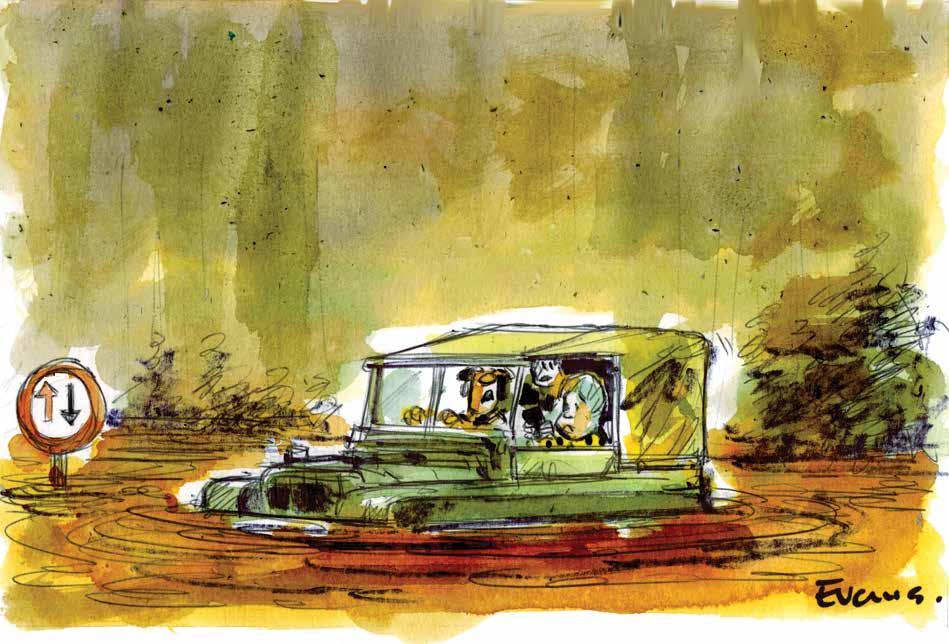
FORGET ABOUT the fabled ‘ruralurban’ divide, the real fault-line in farming might actually be the divide between grass-roots farmers and the industry corporates who claim to be ‘speaking on behalf of farmers’. This gap came to the fore over the Fed’s Save Our Sheep campaign to stop productive sheep & beef land being locked up in unproductive pines. Some reckon a few of these corporate types framed the campaigners as a ‘fringe group’. Not so, says Richard Dawkins, Feds Meat & Wool Council: “Polished corporate narratives may sound convincing, but they often ignore on-farm realities. Quite simply, observing without objecting is a form of endorsement. We’re observing the landscape of New Zealand and the face of our industry changing, but our Meat and Wool Council are also objecting. We do not endorse the status quo.”

LABOUR LEADER Chris ‘Chippy’ Hipkins is carrying on the worldclass gaslighting of the nation that he and his cohorts started after their disastrous covid response; now trying to undermine the covid inquiry to protect his own backside. Labour labelled their critics ‘deplorables’ and ‘conspiracy theorists’, which led to the extensive pasture damage at Parliament in 2022, and now threatens to derail the review of our covid response. The Hound can’t help but see a parallel here with how farmers are treated by their own representatives when they refuse to get in line on issues like signing up to the Paris Accord on climate change. The tactic is to label them as ‘fringe nutters’ and bully them into line. That hasn’t stopped the likes of Groundswell’s ‘Quit Paris’ campaign though, and Chippy’s gaslighting shouldn’t be allowed to discredit the covid inquiry either.
EDITOR-AT-LARGE: Peter Burke Ph 021 224 2184 peterb@ruralnews.co.nz
REPORTERS: Nigel Malthus Ph 021-164 4258
HEAD OFFICE POSTAL ADDRESS: PO Box 331100, Takapuna, Auckland 0740
Phone 09-307 0399
PUBLISHER: Brian Hight Ph 09 307 0399
GENERAL MANAGER: Adam Fricker Ph 021-842 226
EDITOR: Sudesh Kissun Ph 021-963 177 sudeshk@ruralnews.co.nz
Leo Argent
MACHINERY
EDITOR: Mark Daniel Ph 021 906 723 markd@ruralnews.co.nz
PRODUCTION: David Ferguson Ph 027 272 5372 davef@ruralnews.co.nz
Becky Williams Ph 021 100 4381 beckyw@ruralnews.co.nz
THE HUGE success of former Top Gear host Jeremy Clarkson’s new TV show, Clarkson’s Farm, and the boost it has given the image of farming in the UK, has prompted one scribe to wonder aloud who could fill a similar role here in NZ. Probably tongue firmly in cheek, they suggest radio host Mike Hosking – now the owner of a lifestyle block near Matakana, a once-sleepy town near Warkworth, now overrun with Auckland luvvies in loafers and black BMWs. If Hosking is the answer though, you’ve asked the wrong question. The problem we’d have finding a local version of Clarkson’s Farm is, we don’t have any real celebrities, and if we did, they wouldn’t be able to afford (or run) a real farm.
Sir Colin Meads has sadly left us, but ‘Pinetree’s Place’ could’ve been a winner.
AUCKLAND SALES CONTACT: Stephen Pollard Ph 021 963 166 stephenp@ruralnews.co.nz
WAIKATO & WELLINGTON SALES
CONTACT: Lisa Wise Ph 027 369 9218 lisaw@ruralnews.co.nz
Want to share your opinion or gossip with the Hound? Send your emails to: hound@ruralnews.co.nz
SPARE A thought for the arable farmer, squeezed on one side by soft global prices and on the other by limits on further yield increases. Profitability issues facing arable farmers are the same across the world, says NZ Special Agricultural Trade Envoy Hamish Marr, an arable farmer himself. The arable industry is facing “the perfect storm”, the main issue being gross margin. “There is simply not enough money being generated.” Yield has the biggest positive influence on cost of production and this needs to increase to produce more on less land. Hence some growers are considering dairy, hort or sheep as alternatives. He also reckons the sector needs better advocacy in Wellington: “Onions NZ have a $200 million export market and have several people in Wellington, and they brief me before trade delegations. No one rings me from arable.”
SOUTH ISLAND SALES CONTACT: Kaye Sutherland Ph 021 221 1994 kayes@ruralnews.co.nz
DIGITAL STRATEGIST: Jessica Marshall Ph 021 0232 6446
I TRUST my column today finds all things well at your place. The buoyant schedules we are enjoying at the moment are certainly bringing smiles and stability to our rural sector.
Our hard-working farmers are finally getting some well-deserved reward for their efforts.
It’s amazing the difference a year can make. I’m still amazed that any politician would ever have the gall to call the very financial backbone of our economy “a sunset industry”! Surely our biggest export earner should be respected and supported for their massive contribution to our country’s financial well-being, and for paying our bills!
I can never equate ‘slap-in-the-face’ comments like that with wise leadership.

Now, even a casual online search will inform you that earlier in 2025, there were 45 armed conflicts happening on this tiny blue marble we all know as planet earth. That’s right, 45! Is our deeply troubled world at war, or what?
To my knowledge, the longest running of these 45 is still being fought after nearly eight decades. And no ‘peace’ seems to be on the horizon. Having personally visited this country in
Asia several times, I am much more aware of their situation than with many of the others.
For those born into countries like this one, they have never known any real peace. Ongoing war is their ‘normal’. It’s been their lot in life for 80 years. Friends and family get wounded or killed, regularly. Continual suffering is just part of their daily life.
I can scarcely imagine what that never ending ‘nightmare’ must be like – especially as a parent with little ones.
History informs us that World War 1 is also widely known as The Great War. A commonly used slogan at the time used to be, “The War To End All Wars”. How did that tag come about, you may wonder?
Well, it was thought at

the time that the unprecedented scale, devastation and slaughter in WW1 would all serve as very graphic lessons to the human family. It was assumed that as we became more civilised and better educated, we would find more civil ways to resolve our conflicts. Like… let’s all agree to not go there again!
Our civilised and educated world will get it sorted? Yeah right! Is it just that we have failed to learn the lessons from the past? Or are there other deeper issues hiding here?
Yes, I surely appreciate what we have in this great little country of ours. The freedoms and peace we enjoy down
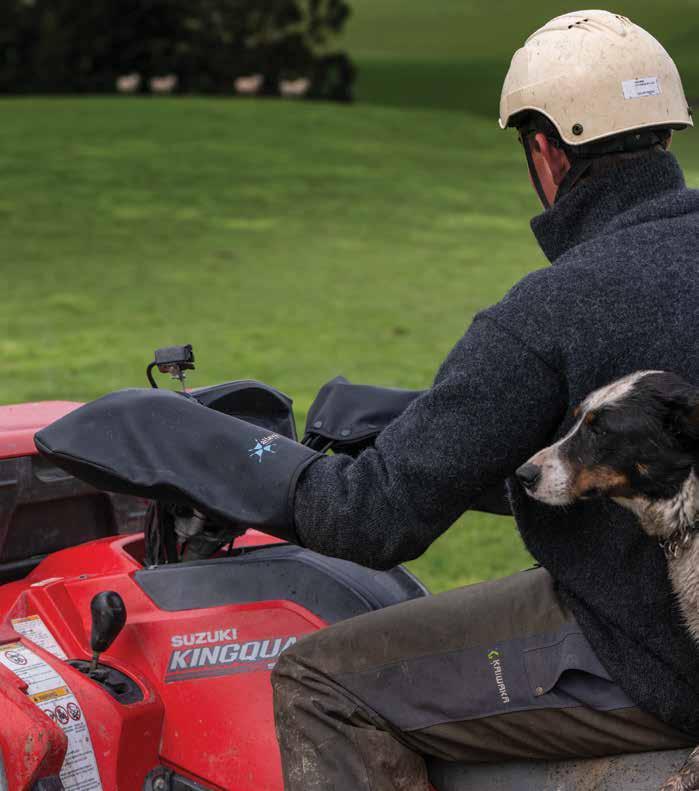
in shooting at each other.
After those couple of diversionary thoughts, I’ll get back to the subject.
There’s just something about us humans that peace will never be a lasting reality while we have war in our hearts. Yep, it’s what’s in our hearts that ultimately will call the shots. Where hatred, and war are brewing away in our inner world, it’s just a matter of time till the real ugly stuff shows up in our outer world.
here are truly a blessing. I am very thankful that this is the place I get to call home. What a privilege!
And it’s great to have our closest neighbours, the Aussies, as true allies too. The ANZACS are the very stuff that lasting legends come from. But for us, our great rivalries are enjoyed and played out on our sports fields, not
We need a heart change. And for that to happen we will need help. That’s where the One also known as, the Prince of Peace, can come to our rescue.
Take care and God bless.
• If you want to contact Colin Miller email: farmerschaplain@ ruralnews.co.nz
BOSS® Triple Mineralised Drench for Sheep controls internal parasites with the power of three individual drenches in one convenient dose.

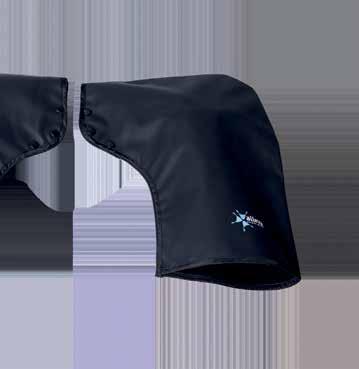

THE ‘SAVE Our Sheep’ campaign is built on a foundation of structure, integrity, and evidence from the Federated Farmers Meat and Wool Council.
Like other commentators, we want thriving rural communities and resilient supply chains –but that future won’t be built on policy illusions.
Our Council isn’t a fringe group venting frustration. We comprise 24 elected farmers from across New Zealand who contribute huge volunteer hours for the good of our industry and country. The farm businesses of these men and women are diverse – from fine wool to Wiltshires, milking sheep to goats, beef cattle to farm forestry, value-added enterprises to agritourism.
We also debate rigorously, but respectfully, and draw advice from Federated Farmers’ inhouse policy team before forming official positions.
For example, take the wholesale conversion of sheep and beef farms to carbon forestry – a key
motivator for the SOS campaign. In their current form, carbon credits function more as a licence to pollute than a meaningful emissions reduction tool.
This is especially the case in New Zealand, where fossil fuel emitters can offset 100% of their emissions via carbon credits. Ironically, not only does the company not need to change its emission behaviour, but the cost of this forestry investment is likely passed on to its consumers.
In plain terms, the price gets socialised and the credit gets privatised.
Adding to that conundrum is the ‘double dipping’ that’s occurring. When a company plants trees and claims carbon neutrality, it then sells or surrenders those emissions units (NZUs).
Meanwhile, the NZ Government also reports this sequestration as part of its national emissions inventory. Additionally, there are now fewer livestock being farmed, which also supports the Government’s efforts to reduce emissions.
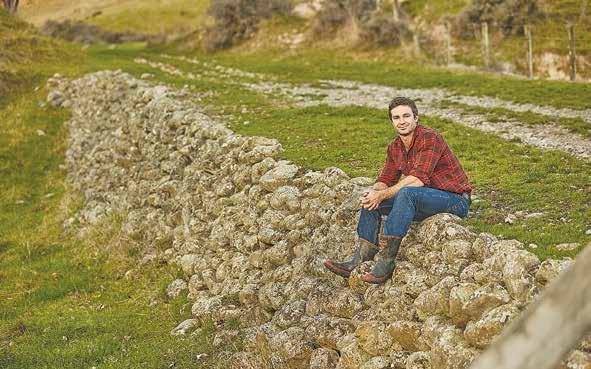
This three-way fallacy has resulted in the loss of 300,653 hectares of farmland since 2017. This large-scale land-use shift is hollowing out rural communities. As stock units decline and jobs disappear, towns lose the critical mass needed to support schools, clinics, and local businesses.
It’s not because farmers failed to adapt; it’s because the policy framework subsidises carbon forestry.
The subsequent artifi-
cially inflated land values raise the barrier to farm ownership. Higher fixed costs mean larger-scale and bigger businesses are required to break even –these affect new entrants and family farms more than others.
Our Meat and Wool Council proposes a range of actions. These include removing incentives for carbon in 100% offsetting to level the playing field, and integrating trees into farm businesses to improve environmen-
tal outcomes and animal welfare.
We support increasing Crown Pastoral Leases to earn export income and improve weed and pest management. We also back recognition of the warming impact of methane – and the progress our sector’s made in reducing it. Let’s champion our industry, and promote our unique, sustainable approach on the international stage.
That said, the Government won’t save us – our

2019
supplements
For over 6 years, Kiwis have trusted us to support healthy aging – with proven ingredients, science-backed quality, and products that help you stay




commercial entities must lift their game. Strong wool requires investment and structures to achieve profitability and fair returns. The red meat sector must become nimbler and more efficient.
Long-term profitability will only come through strategic partnerships across the industry.
Polished corporate narratives may sound convincing, but they often ignore on-farm realities. Quite simply, observing without objecting is a form of endorsement.
We’re observing the landscape of New Zealand and the face of our industry changing, but our Meat and Wool Council are also objecting. We do not endorse the status quo.
To critics who struggle to see where we’re coming from, try listening to the substance behind our stance. Ask why farmers are pushing back, what’s driving the shifts in land uses, and who stands to gain – and who loses.
Understanding won’t always change the outcome but it raises the standard of the conversation – and the credibility of those willing to join it.
• Richard Dawkins, a Marlborough sheep and beef farmer, is Federated Farmers’ new national meat & wool chair.
@rural_news
At the same time, government policies must support – not undermine – the sheep and beef sector. Until that happens, Save Our Sheep will continue to push for change.
facebook.com/ruralnews

feed requirements go up by another 30-50%.
EWE FEED requirements
lift markedly in the last month before lambing.
A 65kg ewe with 4kg twins on board should weigh at least 78kg the day before she lambs. As well as her babies, she’s carrying about 4-5kg of fluid and placenta, and a kilo or more of udder.
Our ewe in the example above needs to harvest the equivalent of two big black rubbish bags of grass every day before she lambs. She can probably manage this in a controlled grazing system prior to lambing if she is happy and healthy and can spend most of the day grazing. Or if she’s on a crop where she can easily harvest this feed and then spend the rest of the day munching on fibre.
Once she lambs, her
Our ewe who was eating around 2kg of drymatter pre lamb now needs to eat 3-3.5kg to milk to her potential. This is threeplus rubbish bags of grass, and this becomes a stretch on short grass systems.
An AgResearch comparison of stocking rates at lambing in the Wairarapa found that for late August/early September lambing dates, every 100kg DM/ha lift in set stocking pasture cover resulted in an extra 2kg of lamb weaning weight.
Ewes also weaned heavier in these groups. That’s worth doing a feed budget for! Late-September lambing ewes were not affected the same by pasture cover – because growth was keeping up with ewe demand.
Lambing dates well in
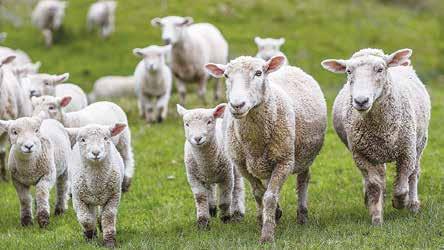
advance of the spring lift in pasture growth require either very light stocking rates, or plenty of feed ahead of ewes to properly meet their energy demands in late pregnancy and early lactation.
Note the point about late pregnancy; there needs to be scope in the system to increase the intake of twin ewes in the last few weeks before lambing. If the choice is
between feeding ewes better before lambing, or saving up feed for after lambing, feed them better beforehand.
Singles don’t require this amount of love, and triplets should be fed ad-lib from scanning onwards (except the very fat ones, but don’t underfeed these in the last two weeks – phew, this is complicated!)
Timing of set stocking
is important. If you setstock too early, ewes will eat more than they need and drop the pasture cover in their paddocks to a level that restricts intake – right when they need more to eat. With multiple ewes, it can be smart to get their animal health treatments done a bit earlier, so they don’t get a feed pinch close to lambing. But rather than set-stock at that point,
keep them rotating until closer to their due date.
So back to the original question on set stocking numbers! Ideally, we want our multiple ewes to maintain covers in their paddocks of 1200kgDM/ha or more. This is 3 to 4cm of winter-grown grass.
If we set stock onto a cover of 1200kgDM/ ha and we don’t want to drop it, our set stocking rate needs to set a daily demand from the ewes that is about equal to the pasture growth rate.
For twin ewes eating 3kgDM/day, at 10 ewes/ha we need grass to be growing at 30kgDM/ha/day. When does your grass start growing that fast? Typically, not in August, and in many parts of NZ, not until later in September or even October. However, in this scenario, at 5 ewes to the hect-
are, we can cope with a pasture growth rate of 15kgDM/ha/day.
The set stocking rates I hear talked about, and see on farms, are often higher than ideal to maximise ewe milk production and future lamb growth, as pastures drop well below the ‘grass grows grass’ level.
Spending some time now doing your own numbers (or getting someone to help you) will be a great investment this year. With projected good product prices, investment in growing more feed, using supplements or lightening the load by making earlier sales of other stock classes, to feed ewes to potential, is a no-brainer. • Ginny Dodunski is a vet and Wormwise programme manager.
@rural_news
facebook.com/ruralnews
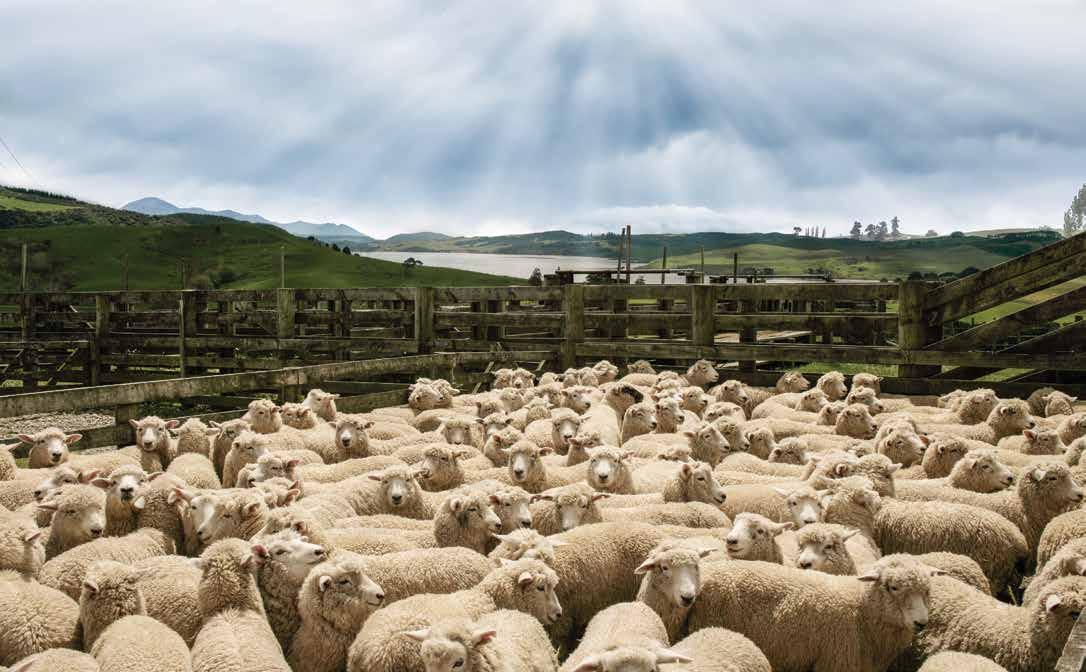


DANIEL
IMPORTED TO New Zealand since 1995, being 25 years with the last distributor, Merlo has become one of the leading players in the telehandler market for agriculture, construction and specialised operations.
Recent changes to the current distributor’s agreements have seen them relinquish the brand, releasing the opportunity for Merlo Australia – directly owned by Merlo spa of Italy – to establish Merlo NZ as a subsidiary.
Effective from July 15, this will ensure the ongoing sales, parts and product support of the well-known brand for existing and potential customers throughout the country.
Going forwards, that support will be delivered by two businesses.
In the North Island, it will be Hamilton-headquartered Ag and Civil Machinery Direct, established in 2017 as a dedicated division of Waikato Tractors Ltd, to meet the evolving needs of contractors across New Zealand.




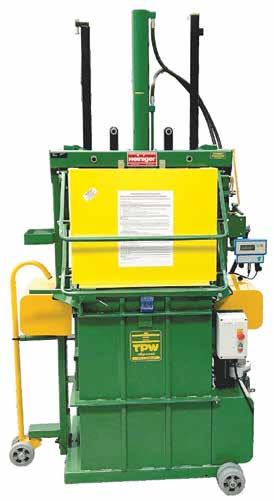
farmers and contractors throughout the North Island and complement the offering of their sister companies of The Tractor Centre in Pukekohe and Waikato Tractors
branches at Hamilton and Otorohanga.
To ensure a knowledgeable and committed approach, the recent appointment of a product specialist sees well known
industry figure John (JP) Chapman arrive to champion the brand.
In the South Island, sales and support will be overseen by the Invercargill-headquartered JJ Group Ltd, who operate from branches at Invercargill, Gore, Mosgiel, Cromwell, Timar, Ashburton and Christchurch, with over 65 years’ experience in the industry.
Both North and South Island business will be able to offer a wide range of models from stock to suit agricultural, construction and specialised users, with the ability to offer bespoke, tailored solutions via an indent programme.
Michael Lombardo, managing director of Merlo Australia says the change in direction by the previous distributor, who he says did a sterling job, allows Merlo to take distribution back in-house and support Merlo customers who have operated their products for many years.
“The new distribution agreements see us working with two established and well-respected family-owned business who share the same ideals as our own family business, focused on support, training and problem solving in a considered and timely manner. We look forward to exciting times ahead.”
A KEY component of the establishment of Merlo NZ is the appointment of industry stalwart Ken Bill as dealer development manager.
Known as Mr Merlo in NZ, Ken brings with him over 25 years of experience with the brand, having played a central role in its introduction and development during his time with the previous distributor. Throughout his career, Ken has built strong, long-lasting relationships with dealers and end users alike, becoming a trusted expert on the Merlo product range.
His deep knowledge and commitment to the brand have made him an invaluable resource in the industry—so much so that colleagues often say, “he’s forgotten more than most will ever know”.
In his new role, Ken will support dealers across both the North and South Islands, helping to ensure a seamless transition as Merlo NZ establishes its presence.
His expertise and leadership are expected to play a vital role in driving the continued success of the Merlo brand nationwide.
THE DRAWN out separation of global giant AGCO and its Indian partner TAFE seems to be ending.
Seemingly having been dragging on for an extended time, both parties have agreed, subject to local laws, to bring any dispute to a close.
Two major points that have been agreed is the ownership of the Massey Ferguson brand will rest with TAFE on an exclusive basis in India, Nepal, and Bhutan.
During deliberations, TAFE insisted because it had represented and developed the MF brand within India since the 1950s, it was entitled to consider the famous red livery the property of the company, so went to court to establish and protect this right in law. AGCO countered this assumption and strongly disputed what it considered to be an
attempted theft of a major trademark.
The outcome is extremely surprising that the corporation has handed over a worldfamous brand with the agreement, although industry sources suggest that AGCO attempting to use the MF brand itself in the three countries concerned, was likely to be commercially impractical.
Both companies have also agreed to untangle themselves from the mutual shareholdings they both hold. Over the years it appears that AGCO had become concerned by TAFE’s level of ownership within their corporation.
Following the settlement, TAFE will no longer carry any influence in the AGCO boardroom, while TAFE has agreed to allow AGCO to buy its shares back from the Indian company, while retaining
the right to hold up to 16.3% of AGCO’s stock. At the same time, AGCO will sell its shares in TAFE back to the Indian company for $260 million.
A further condition at the heart of the agreement will mean that TAFE will not be entitled to a seat on the AGCO board and its shares will vote in accordance with the recommendations of the board. These points reduce any influence that TAFE may have on the running of AGCO.
For AGCO, it achieves a complete independence from TAFE, while TAFE takes formal ownership of the MF brand in India, something it has coveted for many years, while also putting pay to industry rumours that TAFE was attempting to buy the whole of Massey Ferguson from AGCO.
–
Mark Daniel
HAWKE’S BAY farmer
Mathew Barham manages up to 2000 cattle across his 1020-hectare operation, typically a mix of Charolais, Angus and Simmental X steers and bulls, arriving at 12-16 months of age.
Usually weighing between 300 and 450kg on arrival, they are grown to over 550kg and would expect to leave at just over 24 months.
Keen to adopt new technologies, especially those that can save time and support health, Matthew heard about the Gallagher Auto Weigher system, that offered the ability to deliver accurate cattle weights, without needing to bring animals a yard.
Developed by Irish Canadian company StrongBo Agritech, the Auto Weigher enables more frequent weight monitoring in the paddock or feedlot. In operation, the system entices
cattle onto a platform using a mineral or molasses block, the animal is identified by using an EID, before weight data is captured and converted to full body weight, before being transmitted to the cloud.
An intuitive software dashboard allows farmers to view average weight and daily gains of the mob or individual animals, allowing for strategic, data-driven decisions.
Since using the Auto Weigher, Mathew has seen immediate benefits, from its portability between mobs, allowing cattle to weigh themselves in the paddock, resulting in quick and accurate weight measurements without unnecessary stress on the animals.
“We’ve only got one set of yards on a large station,” Matthew explains, “so moving mobs there just for weighing is very time-consuming. The Auto Weigher was a practical and cheaper solution compared to building

another yard.”
One of the most significant advantages centres around improved accuracy in weight assessments, crucial information for upcoming sales.
“Previously, my stock agent would ask about weights, and I could only offer estimates unless I’d recently had animals weighed. Now, when he rings, I have real data, so can provide accurate weights rather than guesstimates.”
Originally sceptical about accuracy with the machine taking a partial weight, confidence grew after cross-checking with the farms existing scales.
Matthew explains:
initiative which took a closer look at the efficiency of a key piece of machinery for arable farmers – their combine harvesters – has been recognised at the Primary Industry NZ Awards.
Instigated by FAR’s technology manager Chris Smith, the combine workshops are saving growers valuable time and money during the critical harvest period as well as reducing potential yield and profit losses.
The combine workshops won the PINZ Technology Innovation Award.
While on the surface it might have appeared that arable farmers and their machinery dealers already knew everything about successfully running combine harvesters, FAR funded an independent team of experts from Australia and Canada to visit and take a fresh look.
For the last two seasons these experts have carried out grower workshops prior to harvest and then returned to visit individual growers on their farms during harvest to check how adjustments are performing in the field.
Adjustments made to combines led to some instant harvesting gains and
cost savings, including reduced crop losses, faster harvesting speeds, lower diesel consumption, reduced horsepower and better harvest samples, Smith says.
“One grower took 70 hours off his combining and another reduced fuel consumption by 30% as well as producing a clean sample.
“Another farmer increased his harvesting capacity in barley from 20 hectares to 30ha a day.
“Some farms were already doing well and it was confirmation for them that they are running their combines efficiently.”
The combine specialists, led by Peter Broley of Primary Sales Australia, each concentrate on particular brands, with Kassie van der Westhuizen advising on John Deere, Brett Asphar on Case and Claas and Murray Skayman, from Canada, on New Holland and Case.
Each expert has 20-30 years of experience with the brand companies, dealerships and as independent consultants.
The workshops show the importance of growers measuring and monitoring potential grain and seed losses and finetuning settings to mitigate these.
“The system uses AI and algorithms once you enter the breed, age and key factors relating to the animals. Data is picked up from the animal’s EID tag, with a result, apart from one outlier, it showed all animals were within just a few kilos of the conventional scales.”
Looking at animal wel-
fare, Matthew suggests that not having to move cattle several kilometres for weighing reduces stress and potential health issues, like lameness, while also offering the ability to look at those cattle that are getting weighed conventionally, and then use the results from the Auto
Weigher to do visual checks more effectively across the paddock, without having to weigh every animal.
“At the same time, it also frees up my teams’ day to be doing other things around the farm,” says Mathew.
Introducing the units to the mobs was pro-
moted by strategically placing molasses-based attractants, that quickly encouraged the animals to step on to the unit.
Matthew says investing in an attractant is a small cost compared to the value of accurate information and the significant time savings. “It’s about making the technology part of your farm’s routine.”
On the practical front, the Auto Weigher is proving to be robust and durable, despite being exposed to rough conditions, alongside the animals using it as a rubbing post and slobbering all over the unit.




In the first of two articles focusing on electrification in New Zealand, Leo Argent talks with Mike Casey, operator of the 100% electric operated Electric Cherries orchard and founder of advocacy group
Rewiring Aotearoa
BASED OUT of Cromwell in Otago, Electric
Cherries has 9,300 cherry trees across 6 hectares and hundreds of workers at peak season, producing around 80 tonnes of cherries per year.
When Casey first began setting up the all-electric orchard, he strove to source as much machinery as possible from New Zealand shelves, with many road vehicles sourced directly from the local Hyundai dealership.
When he could not find machinery in New Zealand, he bought from overseas. He bought an electric tractor from San Francisco and electric frost fighting fans from South Africa.
Where electric machinery could not be sourced from New Zealand or overseas, Casey instead builds or converts onsite.
“Recently we have converted an old 1980’s Hilux to electric and
we’ve also bult our own electrical foley sprayer which runs off the back of our electric tractor.
You try to find it in New Zealand, but if you can’t, you look around the world and as a last resort you build it yourself.”
First purchased as a single house with a single-phase electric connection, converting the lot into a full orchard required completely upgrading the switchboards, transformers and running cables to the necessary locations.
Solar panels were also installed on farm to generate energy that goes directly into the farm’s power grid.
“Very often our electrician comes out to do certain things in the electric space so we can do the job we need to do; they’ve become part of the furniture,” explains Casey. “We have five vehicle chargers at different areas of the farm, like one inside our shed for

the tractor.”
Despite going through what he called ‘the hardest possible transition’, Casey believes it was both manageable and profitable in the long run and adds that for more established farm locations it would be notably easier.
“Many farmers may already run a milking shed or irrigation pivot, at which point they have three phase and quite
large grid connection sizes already. That means all the electrician needs to do is run cables to where those cables need to go to put in charging points.”
While Casey is proud of his operation, he does not think farmers should immediately dispose of their old machines and go down the 100% electric path. However, he believes that once that machinery is worn out,
electrification is the most sensible option.
“There are grants available which the Government has announced recently and what I can categorically say is that, in many cases, you’re going to be financially better in the long run getting a new electric machine and infrastructure on farm. They may be more expensive upfront, but it is going to be cheaper than
buying or financing diesel machines and fuel for the rest of that machine’s lifetime.
“We’re not virtue signalling, saying ‘this is something you should do in the name of climate’. What we’re saying is this is in your best economic interest. The best way to explain is that if you install solar on your farm, that you finance on your mortgage, total costs work out to around



7 cents per kilowatt hour (a litre of diesel is around 2-3.5 kilowatt hours of electricity averaging $1.50-$2 per litre). If you buy it from the grid that’s around 25-35 cents per kilowatt hour.
“So, when you look at it that way there is a significant saving opportunity which in the long run is far more beneficial to chase those savings, even though it requires some capital investment.”


MARK DANIEL markd@ruralnews.co.nz
CASE IH has announced new G500V VariCut variable knife grain headers for its
and
Spanning 6.1-12.5m working widths, seven G500V models each feature knife movement over a 575mm fore/aft range to ensure consistent crop flow in all crop types and conditions.
Wider models feature new hydraulically operated gauge wheels that can be switched from the cab between transport and field mode, making it

unnecessary to manually raise the wheels before loading the header onto its transport trailer.
In addition, attachment and removal times are reduced with all connections grouped on the left-hand of the harvester, alongside a single PTO connection.

The VariCut headers feature an in-line knife drive, with fully-linear output shaft motion, for smooth operation with minimal vibration.
The belt drive has been replaced by gearboxes and a telescopic PTO, reducing overall driveline maintenance require-


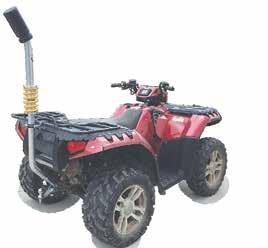


ments and easing the operator workload to maximise comfort.
The 10.5m and 12.5m models feature 100% synchronised dual knife drive, with the right-hand knife driven via the intake auger, which is said to minimise vibration. A knife speed increase
from 660rpm to 735rpm enables higher forward speeds without compromising cutting performance.
The auger stripper setting is now altered from the rear of the header, encouraging operators to regularly check for correct adjustment, and to ensure even and consistent crop flow. The new auger height adjustment assembly provides two pre-set positions: High, primarily for rapeseed/canola, and Low for small grains. Change is achieved by simply loosening four bolts and rotating the over-centre cam system.








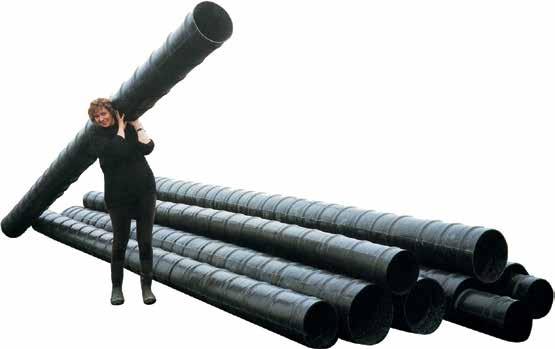









Now includes 15, 20 & 25mm Adaptors in Superflo Standard Adaptor Pack
The Hansen Superflo Valve has been design and built from the ground up to produce a High Performance Super Low Maintenance Valve. With it’s proven success it’s not difficult to see why so many farmers have embraced it. High Performance 188 L/min @

Slipper Fit Piston Helps Eliminate Stuck Valves





Multiple Size Options
Threaded Outlet for Portables, Washdown, Tanks, Irrigation


HAND TESTED
